Matador Network's Blog, page 114
October 3, 2024
This Boutique Thai Hotel Now Offers Cannabis-Infused Wellness Treatments in an Idyllic Island Setting
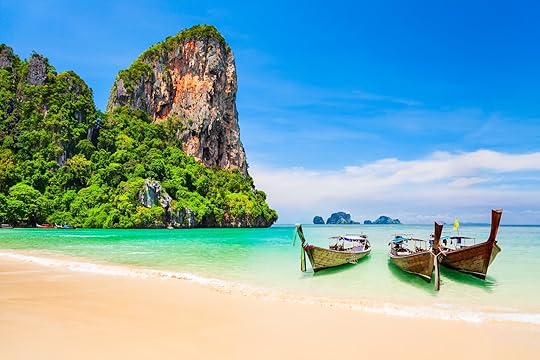
When used in the right way, wellness and cannabis go hand-in-hand. However, thanks to a tricky legal status pretty much the world over, wellness treatments that involve cannabis are generally inaccessible outside of if-you-know-you-know providers. That’s no longer the case on Thailand’s Koh Samui island.
Sunderstorm, the parent company of the decade-old California cannabis brand KANHA, recently expanded into Thailand with a partnership with The Beach Samui hotel for luxury “cannabis-enhanced treatments.” It’s the first licensed hotel in Asia to use cannabis in wellness treatments.
The Beach Samui already has a reputation among luxury travelers for providing a full wellness-centric escape and has the first in-hotel herbal dispensary in Asia. The therapies were designed with KANHA’s doctors and chemists. They include bathing rituals, sound healing, culinary experiences, meditation, vibrational therapies, IV infusions, breathwork, movement, fitness, and education sessions — all that involve cannabis in some shape or form. On-site licensed pharmacists dose everything by preferences, goals, and tolerance levels (an important factor considering everyone reacts a little differently even to the same amount consumed). The serene ocean-view suites surely don’t hurt the vibe.
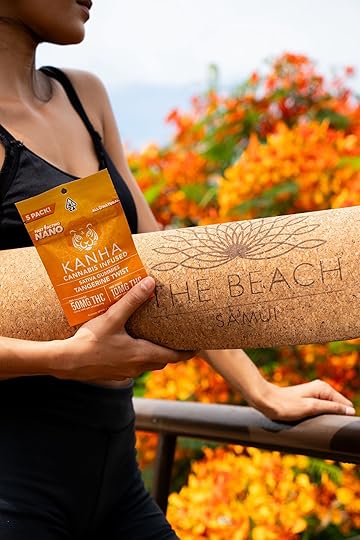
Photo: Sunderstorm / The Beach Samui
This addition brings in more plant medicine treatments to The Beach Samui in a country that has a centuries-long history of using cannabis. In the 1900s, however, cannabis crackdowns turned it into a banned substance with severe penalties for growing, consuming, or selling. That’s still the same story in most of Asia — Singapore threatens the dealth penalty for trafficking drugs (including cannabis), and residents who consume in Thailand can be prosecuted when they come home, according to CNN. Thailand was an outlier on the continent when it legalized medical cannabis in 2018, and then decriminalized cannabis in 2022, which meant it was no longer a crime to grow, trade, or use the plant for health reasons.
Cannabis businesses quickly sprung up to cater to locals and tourists alike. So much so that the former health minister who lobbied for legalization, Anutin Charnvirakul, has had second thoughts. The prime minister has made moves to once again restrict cannabis solely to medical use in the country.
The Beach Samui’s new wellness-focused offerings should be in the clear even if that happens.
“Wellness enthusiasts around the world have been seeking a place where they can enjoy premium cannabis treatments in a resort setting,” Cameron Clarke, Co-Founder and CEO of Sunderstorm, said in a press release. “The partnership between KANHA and The Beach Samui delivers on this market demand with one-of-a-kind experiences that allow travelers to enjoy cannabis as they relax and recharge in a luxury resort on one of the best islands in Asia.”
Travelers can use the code KANHA for 30 percent off stays until the end of November, and 10 percent off from December through August 2025. 
The Coolest Way to Help Protect Your Favorite Outdoor Spaces? Build Beaver Dams.

When you camp or hike in a national forest, it’s easy to assume that forest is as it’s always been. Trees, trails, flora, fauna. But there are more than 193 million acres of national forest across the United States, and maintaining the health of the diverse ecosystems encompassed with the national forest system takes a lot of work. The National Forest Foundation is the non-profit “friends of” arm of the National Forest Service, and its efforts helped reforest more than 14,000 acres in 2023 alone.
If you’re an avid user of trails on national forest land, one of the best ways to help protect the open spaces you love is to support the foundation’s work. Matador spoke with Adde Sharp, Watershed Program Coordinator for the Rocky Mountain Region at the NFF, to learn about the foundation’s work on the Soda Creek Restoration Project in Colorado and how you can get involved in protecting the places you love.
‘We’re imitating beaver dams’ – About the Soda Creek Restoration Project
Photo: Kellon Spencer/Courtesy National Forest Foundation
The project Sharp described is an iconic example of conservation organizations putting money to use for the common good – and in addition to enjoying the natural splendor of the surrounding White River National Forest, you can be involved in future efforts. As a traveler and outdoor recreationist, it’s so critical that you are. Part of the work involves getting down and dirty to create what are effectively man-made beaver dams — because nobody protects their surroundings quite like a beaver.
The Soda Creek Restoration Project showcases how conservation of public lands and natural spaces works when the public, private, and non-profit sectors come together – in addition to the travelers that use these lands. The Soda Creek channel is upstream of Dillon Reservoir, a beautiful outdoor site in the high elevation of Summit County that hosts anglers, paddleboarders, boaters, and more in the summer months. The reservoir, however, is also a major source of drinking water for the Denver metropolitan area. As the state has grown and travel to it has increased, demands on its water resources have strained supply over the past century. The channel has been slowly degraded. The NFF came in three years ago to implement low-tech process-based solutions, including creating structures that replicate beaver dams and slow the flow of water while building habitat, to restore the watershed and in turn, draw birds and other wildlife back to the area.
Historically, the area was a wetland. But it is historically significant in Summit County as an agricultural area. Mushy, willowed areas aren’t conducive to farming,
“In order to farm the area, the stream was pushed to the side,” Sharp says.
As farming declined in priority in this high-elevation zone, the area degraded into a state that was not only bad for farming, but that couldn’t support the beavers, red foxes, elk, and other wildlife that had historically lived in the area. Nor, the native plant life.
“It looked like a beautiful meadow, but it had turned into a not-diverse meadow full of non-native grasses,” Sharp says. “The point of the project is to reclaim the ecosystem.”
The project is about three years in the making. Following permitting and planning, the project work completed now is will reestablish 29.9 acres of wetlands and rehabilitate 12.5 acres of existing wetlands. Low-tech process-based restoration involves stuff like building mand-made “beaver dams” that act to control the flow of water while helping the area return to its “wetland” state.
“It’s mostly handwork done with natural structures in the stream,” Sharp says. “This allows the habitat to return. We’re done with the project and will be monitoring it over a period of five years to ensure the 42.5 acres of wetland do return. It’s a preliminary success, and the next couple years will really confirm that.”
The project area is also a pilot site for future projects as part of the NFF’s innovative Colorado Western Slope In-Lieu Fee (ILF) Program. This allows for the development of wetland and stream compensatory mitigation sites to offset permanent impacts to aquatic resources throughout designated areas in Colorado, Sharp explained. Basically, when a developer wants to build in a wetland area, they have to offset that impact.
In the Blue River and Eagle River watershed drainage, tehre’s a lot of development, there’s a lot of impact to wetlands. By restoring this, we’reoffsetting the impact to those wetlands. This allows developers to buy credits in their development areas to offset their impact. If you develop a half-acre of wetland, you have develop a full acre of wetland to ensure a ‘no loss’ operation.”
Finding unique approaches to funding conservation and restoration efforts
Photo: Kellon Spencer/Courtesy National Forest Foundation
The Soda Creek Restoration Project saw funding from major companies like Coca Cola and Swire, two corporate partners that came on board to work with the NFF to support the project. This ability to partner with private sector businesses, unavailable to government entities such as the National Forest Foundation itself, helps the NFF diversify the funding streams for conservation and restoration efforts in the national forest system. The organization is outside the federal funding system and therefore not subject to congressional swings in terms of funding.
“The forest service can’t make those direct partnerships to get the funding onto the ground,” says Sharp. “We’re more nimble, we;re not a bureaucracy, we can do things more quickly. The idea of the NFF is to have a more nimble layer that can step in and help projects when necessary.”
Another layer is citizen engagement. The NFF actively wants you and fellow travelers to be engaged with restoration efforts in the areas where you like to recreate. The organizaiton lists ways to get involved on its website.
“We often have opportunities for volunteers to get out and engage with these different projects
If you aren’t able to volunteer, the NFF encourages donations to support the work on the ground.
“Water is something we all depend on, and the more we can get the word out and get the public excited, the more luck we’re going to have continuing to restore watersheds like this,” Sharp says. 
Data Show This Easy Outdoor Adventure Could Be Europe’s Big 2025 Travel Trend
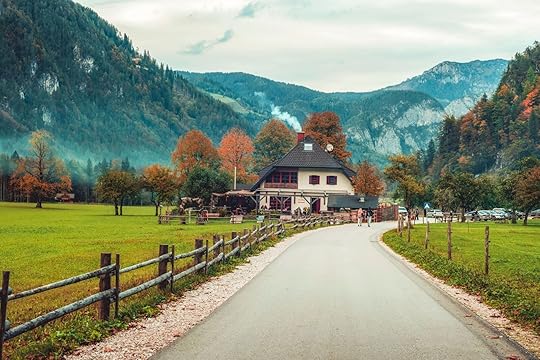
With the prevalence of online booking websites and simplicity of finding tour operators online, some might say that travel in 2024 is as easy as riding a bike. But in 2025, travel may literally be riding a bike.
A new worldwide survey of 245 cycling tour operators and sellers found that European bike trips may be the next big travel trend in 2025. And that’s not because the survey was biased toward biking, but because an analysis of collected data showed that many cycling-related businesses have seen significant growth in bookings and interest year-over-year, and are planning for 2025 to be busier than ever. Two-thirds of respondents said they they’re hosting more travelers in 2024 than they did in 2023, with 68 percent reporting year-over-year revenue growth.
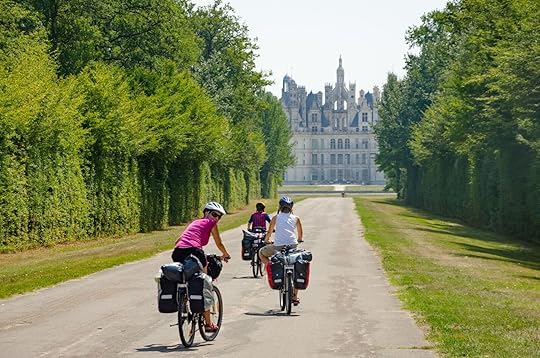
Data showed that France is the second-most popular destination for cycling trips, right after Italy. Photo: Michal Szymanski/Shutterstock
According to the data, the most popular type of bike in Europe is a “touring” bike, at 63 percent. (It’s similar to a road bike, but with sturdier materials and thicker tires so it can better carry packs and gear for multi-day trips.) Next most popular is road biking, at 14 percent, and mountain biking, at 10 percent. But US-based companies who responded said mountain biking is the most popular, followed by touring (more commonly called “bikepacking” in the US,) and road biking.
When it comes to destinations, companies reported that perennial favorite Italy is the most popular destination for their guests, especially in Tuscany. The second-most popular options were bike tours in France, followed by Germany, Austria, and Spain. For tours within Europe, Germans are the most common guests, especially on self-guided bikepacking (or touring) trips. But outside of Europe, it’s Americans who are booking trips, preferring guided mountain bike trips to individual road or bikepacking trips. In Europe, four-to-eight trips are the most popular, with companies from across the world saying that seven-day tours are the most popular.

The availability of e-bikes has made European bike tours more accessible for people who wouldn’t consider themselves regular bikers. Photo: Bonn Bonn Photo/Shutterstock
The data collected also offer insight on why European bike trips could be growing as a travel trend. One key point is that e-bikes have become readily available, with 72 percent of European companies saying at least a quarter of their clients use e-bikes. Additionally, most bike trips include activities other than biking, including visits to small villages and towns (83 percent of tours), visits to parks and outdoor sites (68 percent of tours), and trips to castles, museums, and historic sites (57 percent of tours). The combination of e-bike availability and non-biking activities means that cycling trips are more accessible to more people, reaching a broader audience instead of just die-hard cyclists who want to spend the majority of the day in the saddle.
The survey also showed that bike tours within Europe are significantly less expensive than those outside of Europe (though that’s partially because unguided trips are more common in Europe). In Europe, the average bike traveler spent an average of 128 Euro per day (about $141), but that number climbs to 214 Euro (about $236) per day for trips outside of Europe.
If you’re worried about your athleticism or stamina, don’t be. The top challenge to running successful trips faced by bike companies isn’t client fitness — it’s finding accommodations. More than half of companies said that’s their top challenge, especially as cyclists prefer to stay in traditional accommodations, with two-thirds of companies reporting they use three-star-or-higher hotels for guests.
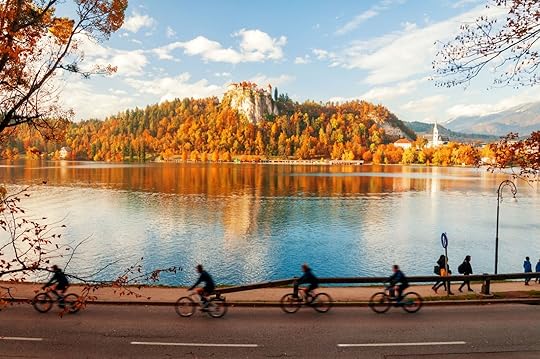
Tour operators think Eastern European destinations will grow in popularity in 2025. Photo: rbrechko/Shutterstock
According to the survey, Europe will continue to grow in popularity with cyclists in 2025. But it’s possible travelers may spread themselves out a bit in the coming years. Companies responded that Eastern Europe was growing in popularity among clients, especially around Slovenia, Slovakia, Hungary, and Croatia. Türkiye was also mentioned as a growing destination, including the area around Cappadocia — a destination already known for its popularity with mountain bikers.
 More like thisCyclingDon't Be a Jerk: E-Bikes on Trails Are (Mostly) Okay
More like thisCyclingDon't Be a Jerk: E-Bikes on Trails Are (Mostly) Okay
Road to Hana Maui lodgings

The famed Road to Hana on Hawai’i’s Maui island starts in Kahului, near the airport. It traverses 63 miles and a seemingly endless stretch of one-lane bridges and switchbacks — taking you past some of the planet’s loveliest waterfalls and hiking trails. It’s a drive that embodies the journey-is-the-destination mindset. So why not keep the journey going a little longer by breaking it up with some overnight stays? Add in some beachside camping and waterfall hiking without having to skimp your time in the destination itself.
This plan will be rewarded with some of Maui’s most memorable, off-the-resort-path lodging options. Accommodations along the route and in Hana range from campsites to luxury hotels, with everything in between. No matter which you choose, you’ll wake up surrounded by the beautiful scenery for which Maui’s eastern side is famous.
We hope you love the spaces and stays we recommend! Just so you know, Matador may collect a small commission from the links on this page if you decide to book a stay. Listed prices are accurate as of the time of publication.
Where to stay by the Road to Hana’s best hikes and waterfalls
Photo: arkanto/Shutterstock
Upper Waikani Falls is located between mile markers 19 and 20, about halfway timewise along the route. Nearby along the route are Puohokamoa Falls, Makapipi Falls, Waiokilo Falls, Kopiliula Falls, and others, a handful of which require a hike in. There are also plenty of popular hikes — like the Bamboo Forest, Twin Falls, and the many trails at Ko’olau Forest Reserve — each of which is doable as a day hike. To spend more time exploring the falls and forest before continuing on to Hana, you could rent a jeep equipped with a rooftop tent. Aloha Glamp’s jeep is bookable via Booking.com. Towels and bed linens are provided and it gives you a little more flexibility on the journey. A stay in this region means you’ll be surrounded by hiking and sightseeing opportunities just outside the Haiku-Pauwela town, a short drive from Paia.
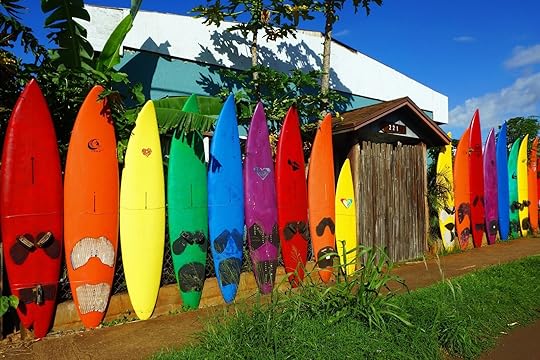
Photo: Serge Yatunin/Shutterstock
Paia itself is a hippie beach town that combines a laid-back vibe with upscale amenities. It’s the place to sip the perfect cup of coffee at Island Fresh Cafe in the morning and spend the afternoon overlooking the windsurfers hucking their moves at Ho’okipa while eating the best fish taco you’ve ever had. With a town so epic, there’s no reason to pay $500 plus a night for accommodation. Stay in an Airbnb near the beach a little over $200 for a house or at the renowned Aloha Surf Hostel, where for $136 per night you can become buddies with fellow surfers who can show you the best waves before you hit the road to Hana.
Camping at Wai’anapanapa State Park
Photo: Shane Myers Photography/Shutterstock
Wai’anapanapa State Park is among the top stops on the Road to Hana, largely because of its famed black-sand beach and trails through the lush forest. Camping is available in the park with a reservation at $30 per night for non-Hawai’i residents, with the same rate applying to campervans. The park also rents out cabins for $100 per night, two-night minimum, which are as secluded as the surrounding park is beautiful.
Should you elect to spend the night at the park, make the most of your time by doing the quick hike at the nearby Hana Lava Tube and stopping by the Hana Maui Botanical Gardens. Inside the park, you’ll likely spend most of your time hiking and lounging on that black sand. Just don’t forget your camera, because unless you make it back to the Wai’anapanapa, you’ll never find yourself in a setting like this again.
Traveling to Hawaiʻi? Check out Matador’s guides to the best places to stay on every island:These Are the Best Hotels in Waikiki, Minutes From the Sand, for All BudgetsExperience the Best of Honolulu at These Luxury Resort HotelsThe coolest Airbnbs on O’ahuThe best Airbnbs on Hawai’i’s Big Island13 stunning yet affordable Airbnbs on Kaua’iThese Hotels on Hawai’i’s Big Island Showcase the State’s Best BeachesWhere to stay in Hana town
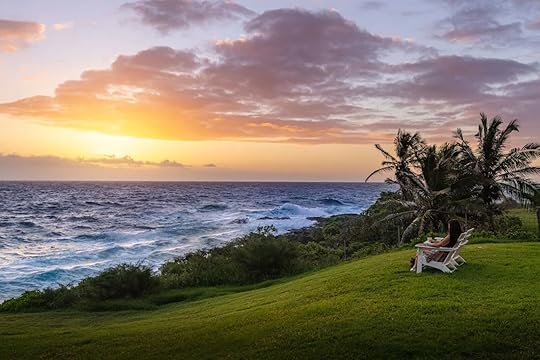
Photo: Hyatt
If you’re going to take the Road to Hana, it’s well worth staying over in Hana itself for at least a night. The most unique lodging in Hana town is the the farm cottage at Olamana Organics, reservable on Airbnb. For about $355 per night, you get a one-bedroom cottage on farmland on the outskirts of town, immediately surrounded by nothing but dense tropical foliage. At this small-scale working organic tropical fruit farm, you will likely see the owners harvesting fruit or flowers and taking care of the plants. Guests are encouraged to walk around the five acres and enjoy the land. If your goal in getting to Hana is to soak in the island’s wilder side, this is the place to stay.
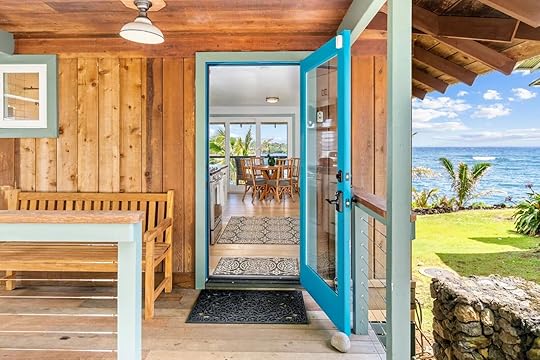 Photo: Airbnb
Photo: Airbnb Photo: Airbnb
Photo: Airbnb Photo: Airbnb
Photo: AirbnbOr, if you’d like an ocean view, check out this one-bedroom cottage on the edge of Hana Bay. It has an open-planned living space and a covered deck looking out onto the ocean. Here, you’ll have a front-row seat of spectacular sunrises and sunsets while listening to the waves crashing on Waikaloa Black Rock beach.
 Photo: Hyatt
Photo: Hyatt Photo: Hyatt
Photo: Hyatt Photo: Hyatt
Photo: HyattThat said, luxury is never far away on Maui. If cost is not the issue, check into the Hana Maui Resort. This Hyatt property has all the trimmings of a luxury beach resort, with outdoor dining, a massive pool, and an on-site spa. You can take a morning walk to Hana Bay Beach Park, savoring the view before the day-trippers arrive from Maui’s west side. Just be ready to spend over $550 per night.
For a more humble but no less picturesque stay, consider the Hana Inn (long known as Joe’s Place). Rooms here start at just over $150 per night with easy access to Hana Bay. The house deck and barbecue make this an easy place to meet fellow travelers and share recommendations — and swap ideas for yet more magical spots to visit on your way back west. 
Where to Find the Best Beaches in Maui

Asking what the best beaches in Maui are is like asking what the best pizzas in New York City are. Sure, people (and especially locals) will have an opinion, but good luck trying to find a consensus. And the reason why is simple: everyone has different preferences. While some who head to the Hawaiian island’s beaches might want to snorkel, others might want to spot wildlife, and still others might want to catch a wave break. And experienced surfers aren’t going to always value the same spots as beginners.
This is something that Ric Rodriguez knows well. A Jean-Michel Cousteau-trained naturalist with the Ambassadors of the Environment at The Ritz-Carlton Maui, Kapalua, Rodriguez is deeply familiar with Maui’s beaches. It doesn’t hurt that the 54-acre resort has easy access to a number of beaches and bays on the popular leeward half of the island that runs from the northwest to the southeast.
“For me, the most quintessential Maui beach day actually starts deep within the valley, volunteering within the Ahupua’a (the Hawaiian concept that speaks to watersheds, the connection between land and sea, and our responsibility to steward the land) to restore the land to its natural state by removing invasive species,” Rodriguez says.
From there, the coastline is just across the highway — and there is a wide range of beaches to choose from on said coastline.
It is worth noting, however, that the devastating wildfires that ravaged Maui last year left an indelible mark on its natural landscape. The wildfire, which was the deadliest in the US this century, killed at least 102 people and destroyed homes, businesses, and historical landmarks. However, the full extent of damage to Maui’s beaches and the ecosystem might not be apparent for years to come. Extensive clean-up efforts by local authorities and volunteers mean there will likely be little to no visible damage to a beach you visit. However, it’s important to be mindful while exploring Maui and walk that delicate tightrope of supporting the tourism industry while respecting those in mourning, continuing recovery efforts, the community, and customs.
With that in mind, we tapped Rodriguez to narrow down the best Maui beaches, whether your looking for what to do on your first time to Hawai’i or on your hundredth time.
This interview has been edited for length and clarity.
Matador Network: In your opinion, what side of Maui has the best beaches?Ric Rodriguez: In my opinion, Maui’s leeward side has all the best beaches. If you want to swim, snorkel, do any number of water sports, and enjoy the beach, then the leeward, or downwind, side has the absolute best beaches to enjoy. Up in the northwest, just south of Kapalua Bay, we can find a seemingly endless string of intimate and charming beaches, bright turquoise waters, and a whole underwater world to explore just beneath the surface.
What is the best Maui beach for surfers, whether they’re novices and experts?
Photo: Zane Vergara/Dave Heath
The beauty of the entire leeward side is that, depending on the conditions of the day, you could have the perfect day for snorkeling (waves barely noticeable, water glassy and clear like a pool), the perfect day for an introductory lesson in surfing (small, consistent, and welcoming waves that are sure to grant you your first ride), and the perfect day for expert riding (epic swells, fun sets, and tons of camaraderie on the water).
For true beginners, I like to recommend Olowalu. As a long open stretch of beach, there is plenty of space to learn without fear of overcrowding. Plus, once you’re done with the surf, it’s an excellent place to chill, have a picnic, and enjoy your day. Home to some of the oldest coral reef systems in Hawai’i, Olowalu packs the perfect punch for an adventure day.
What is the best Maui beach to see wildlife?
Photo: Bandersnatch/Dave Heath
In my opinion, the best beach to see wildlife is down south at Ahihi-Kinau Natural Area Reserve. As a protected land and marine site, the wildlife has the space it needs to flourish and thrive without human interference or pollution, and thus the flora and fauna are a marvel to see. Every time I’ve been, I have had the joy of observing hundreds of fish, eagle rays, and eels, and I always observe a species I’ve never encountered. It is worth the trip.
Kapalua Bay has gotten a lot of press — do you think that there’s anything that people generally miss that makes the spot so great?There are a ton of hidden gems throughout the Kapalua Bay area. Truthfully, Kapalua’s best kept secret is our adventure program located at The Ritz-Carlton Maui, Kapalua. The Jean-Michel Cousteau Ambassadors of the Environment program seeks to engage our guests very differently than the average tour on Maui. While they’re all fun, what differentiates our program is the authentic, tailored, and connected experiences that we create for each and every participant. Never exceeding a maximum capacity of eight individuals, our programs are exclusive, personal, and immersive adventures on the land and in the sea of Kapalua Bay.
Traveling to Hawaiʻi? Check out Matador’s guides to the best places to stay on every island:These Are the Best Hotels in Waikiki, Minutes From the Sand, for All BudgetsExperience the Best of Honolulu at These Luxury Resort HotelsThe coolest Airbnbs on O’ahuThe best Airbnbs on Hawai’i’s Big Island13 stunning yet affordable Airbnbs on Kaua’iThese Hotels on Hawai’i’s Big Island Showcase the State’s Best BeachesWhat is your favorite Maui beach to snorkel at and what can people expect to see?

Photo: Ambassadors of the Environment at The Ritz-Carlton Maui, Kapalua
Here in Kapalua, my absolute favorite snorkel spot is Honolua Bay. The conditions can be hit-or-miss (expect some rough days on the water), but when you catch a calm day out in Honolua, the amount of biodiversity in the water is breathtaking. The bay itself is protected, both on land and sea, and thus feels much more intimate than some of the resort beaches.
Note: this snorkel is slightly more challenging, as the entry is rocky. But it is so worth it.
Are there any beaches nearby to the Ritz-Carlton Maui, Kapalua, that offer something people can’t find anywhere else?The Napili and Honokowai beaches are all lined with mature mango trees. If you come during mango season, you can forage a few perfect mangos on your way down to the beach and have a snack from the land as you prepare to enter the water. There’s no better way to feel truly immersed in the nature than that.
What are the best beaches in Maui for families?
Photo: Circumnavigation/Dave Heath
Kapalua Bay Beach is an excellent go-to beach for families. There’s an adventure hale located on-site for gear rentals (snorkeling gear, boogie boards, SUP, and more), so you have everything you need for a day of fun in the sun. Plus, because the Kapalua Bay Shuttle does pick-ups and drop-offs, the experience is logistics-free.
Even though Kapalua Bay Beach is popular among both locals and tourists, the coral reef habitat within the protected waters is thriving and abundant — the perfect intro-level snorkel. If your family is looking to snorkel for the first time but wants some guidance and personal attention, plus the added safety of a certified waterfront lifeguard, contact the Ambassadors of the Environment program at The Ritz-Carlton Maui, Kapalua, to book your private Cities Under the Sea Snorkel during your stay.
What is the best Maui beach for people looking to get away from the crowds?Most people in the area know about Kapalua Bay Beach and will spend their beach time there. What a lot of people don’t know, however, is that just south of Kapalua Bay is an area called Napili. Napili has some of the most pristine waters on island. Just an additional five-to-10 minutes south, you can escape the resort crowds and head into your own world of fun in the sun.
In your opinion, what’s the most underrated nearby beach and why?There are a couple of different beaches that come to mind. For one, our closest beach, D.T. Fleming Beach Park, is often written off as being too wavy or too rough. While it is often a very active ocean, there are a lot of days where you’ll find D.T. Flemings is calm — it’s days like this that I make it a point to snorkel in those waters.
With the incredible Makaluapuna Point lava rock formations converging into the clear waters on the left-hand side of the beach, the underwater landscape is other-worldly. Another underrated spot in the area is Honokowai beach. About 10 minutes south of Kapalua Bay, this area offers some of the bluest waters. Plus, there isn’t a single visit to Honokowai where I haven’t seen a number of our Hawaiian green sea turtles exploring the coastline.
How does the hotel make it easy for guests to make the most of the beach?Our hotel has direct access to a couple of excellent beaches right from our property. D.T. Fleming Beach is closest and easiest to access, but there are six bays and beaches within walking distance or a 10-minute drive. Location isn’t the only way the hotel immerses guests in beach opportunities; the Ritz-Carlton’s exclusive eco-tourism and adventure program offers high-quality, exclusive snorkeling adventures, available for guests and non-guests alike.
Are there any beach activities that people may be less aware of than snorkeling or boogie boarding that you suggest people try?
Photo: Ambassadors of the Environment at The Ritz-Carlton Maui, Kapalua
One of the coolest ways to explore the coastlines of Maui is tide pooling. Because of the ancient lava flows that make up Kapalua Bay, there are a seemingly endless selection of naturally carved-out pools along the shoreline. During low-tide, these pools are exposed, and some of the coolest, hardiest, and most resilient creatures of the ocean are there to observe in their own pristine, natural, mini-aquariums.
Note that when tide pooling, it is important to only look, not touch, the creatures in the pools. Because those pools are still water for most of the day, any contaminants that enter the system have a huge effect on the critters within. 
October 2, 2024
Matador Creators Spotlight: John Gonzalez on Landing His First Press Trip With Matador

The Matador Network team loves nothing more than getting out from behind our desks. But with countless corners of the globe to explore, we understand that we can’t do it all. That’s why we’ve cultivated a vibrant community of talented travel writers, editors, photographers, filmmakers, and influencers through our Matador Creators platform.
Matador Creators is a hub where passionate individuals can connect, collaborate, and share travel experiences. Whether you’re a seasoned professional or just starting your journey as a travel content creator, there’s a wealth of opportunities to help or launch your career.
One of the most exciting benefits of joining Matador Creators is the chance to land press trips to some of the world’s most incredible destinations, and we can also help you find paid travel gigs. From freelance writing assignments to sponsored content opportunities, there are numerous ways to monetize your passion for travel and storytelling.
Here, we speak with one of our creators: John Gonzalez, a journalist with more than three decades of experience based in Grand Rapids, Michigan.
This interview has been edited for clarity and length.
Matador: Can you introduce yourself and tell us what sets you apart from other travel writers and content creators?John Gonzalez: I’m a seasoned journalist. That’s one way to say, “I’m old.” But, honestly, I say “seasoned” because I’ve seen trends come and go, which gives me the perspective to better communicate authentic and worthwhile experiences.
I’ve also helped pioneer the early days of social media, which means I was an “influencer” well before anyone used the word “influencer.” However, I value storytelling as an art form, whether in words, video, podcasting, or whatever is next. Authenticity means everything.
How did you initially hear about Matador Creators and land a press trip?It’s a funny story. At a gas station, I saw Matador advertising on the pump video screen. Matador was promoting its AI Guide Geek tool. I was traveling to Italy and thought I would give it a try. I was impressed. Of course, being a journalist, I had to do more research about the Matador Network. I signed up to be a creator but did not apply for a job for another eight months. I wanted it to be the perfect assignment where I was a good fit for the company. When I saw a trip to Cincinnati for Reds Opening Day combined with Bourbon and Beer, I applied and got the press trip almost immediately.
Read John’s press trip story on Matador Network
Photo: John Gonzalez
How long have you been working with travel brands and media, and how did you get started?I have a three-decade career in journalism, with the bulk of it in the features, travel, and entertainment side of the business. I got started as a sports writer when I was still in high school, but in college and my early professional career, I was a music critic, hanging out with Bruce Springsteen, Aerosmith, Garth Brooks, and even a young, up-and-coming performer with a big dream, which she shared with me on her tour bus. We all know her today as Taylor Swift.
As my career progressed, I became a newspaper editor, a radio and TV host, and a social media innovator. But I was always interested in the stories behind our restaurants and travel destinations. That’s when I created a travel brand called “Behind the Mitten” with my partner Amy Sherman. The two of us travel the state of Michigan as a travel radio show and podcast. Along with the show, I’ve worked more recently as a writer and video contributor for Pure Michigan, an award-winning travel marketing brand. That experience has helped me grow as a writer and content creator.
How has working with Matador helped your work in travel?Working with Matador makes you realize we are global and not just local. While local is the heart of everything, looking through a broader lens gives you a better perspective of our world. There is still a lot of good out there.
What are some of the biggest misconceptions or challenges of working in travel media?It’s hard work. You stay up late. Get up early. You spend more time obsessing over details and facts, which can be very unglamorous despite how glamorous the final product may be. Every story has a lot of blood, sweat, and tears.
What three tools do you rely on most?Listening is a very underrated tool. Too often, writers and content creators immerse themselves so much into the story that they forget the real story, and that’s the destination and the people who make it a place worth visiting. After that, you have to be a great self-editor. You have to think about the content readers are most interested in. Finally, don’t be afraid to try something new. Take a different approach. Don’t just copy what others are doing. Be yourself.
What advice would you give to someone interested in entering into the industry?To borrow a cliche, just do it. Take that first step. Learn from the pros. And when you think you’re a pro, humble yourself to start all over and learn something new. 
The Caribbean’s ‘Nature Island’ Just Got Easier to Reach With a New Direct Flight on United Airlines

Dominica is known as the nature island. The 300-square-mile Caribbean island is located between Guadeloupe and Martinique, and it has the highest concentration of dormant volcanoes in the world, hot springs and warm streams, and ample opportunities for scuba diving over reefs encased in bubbles from the ocean floor.
It’s also off of most travelers’ radar — even among those who return to the Caribbean for vacation time and time again. Though Dominica recently became easier to get to with the second direct flight from the United States: a United Airlines flight from Newark Liberty International Airport to Dominica’s Douglas-Charles Airport on Saturdays.
Douglas-Charles saw a recent upgrade that included a 6,351-foot runway extension and runway grooving that opened the door for larger aircraft and fewer cancellations. On the other side, the New York City and tri-state area is an intentional choice. It’s the area with the largest number of travelers going to Dominica.
“The new service by United Airlines is a major step forward toward the island realizing the aggressive goal that it has set for itself and is part of the strategy being pursued in concert with the development of the new international airport,” Dominica’s minister of tourism Denise Charles-Pemberton said in a press release. “This route will help alleviate the access constraints faced by the destination over the years.”
There will certainly be plenty for travelers to see in Dominica. The island may be small, but it’s still an ideal place to take a road trip. From beaches, to sea caves, to rivers and lakes, there’s also a seemingly endless number of chances to get in the water and find outdoor adventure. Current accommodations on the island cover a dreamy range of hotels — including the new InterContinental Dominica Cabrits Resort & Spa. It soon won’t be the only new place to stay: Dominica will add an additional 500 hotel rooms (a 25 percent increase) in 2025.
If you’re looking for a time to go, the new flight lines up nicely with Dominica’s Mas Domnik Carnival on March 3. The event is full Carnival with competitions, activities, and calypso music. 
Locals Know Shoulder Season Is the Best Time to Visit Lake Tahoe

Psst. We’re going to let you in on a secret. Lake Tahoe doesn’t disappear after Labor Day… but the summer crowds do. That means less traffic, fewer hikers on the trails, and beaches you barely have to share. Campsites get easier to book, too, so you can marvel at the autumn hues reflecting on Big Blue on a spur-of-the-moment getaway.
Mild fall temperatures are ideal for outdoor activities on the South Shore of Lake Tahoe, where iconic landscapes meet hidden pockets of nature and stellar culinary and entertainment options. The Lake Link Microtransit Shuttle makes it a breeze to get around with free, on-demand, point-to-point transportation (you can download the app here).
No one knows where to go on the South Shore of Lake Tahoe in the fall like a local. So, we asked one. Here’s the inside scoop on your new favorite time to visit: shoulder season.
Hitting the trails and admiring the foliage
Photo: Brian Walker/Lake Tahoe Visitors Authority
The hiking trails on the South Shore of Lake Tahoe wind through forests, along lakes, and up bluffs and mountaintops to showcase spectacular vistas wherever you turn. In fall, the leaves are colorful and the trails are peaceful, especially on weekdays when fewer visitors come to the lake.
Get your bearings on Maggie’s Peak, a challenging 4.1-mile hike in the Desolation Wilderness. It’s a steep climb, but at the top you’ll find the breathtaking views of Emerald Bay and Fannette Island responsible for inspiring a million posters and postcards. For a longer hike, the Rubicon Trail runs from Vikingsholm Castle to D.L. Bliss State Park, passing sandy strips of beach and dramatic rock formations along the way.
While Lake Tahoe is undoubtedly the most famous, this region is home to dozens of alpine lakes with many more trails. Fallen Leaf Lake has miles of hikes for all ability levels, and it’s one of the best places in Lake Tahoe for leaf peeping. Nearby, the Angora Lakes Trail is an easy one-mile, out-and-back hike to two small lakes. At the top, Upper Angora Lake is flanked by a sandy beach and dramatic cliffs.
If you’d rather chase waterfalls, the 200-foot Cascade Falls is a 1.5-mile, out-and-back hike from the Bayview Campground. The round-trip Eagle Falls jaunt, meanwhile, is only slightly longer. The cascades are about a half-mile hike from the Eagle Falls Picnic Area. Continue on and you’ll reach Eagle Lake, framed by forests and granite peaks.
To explore on two wheels, head to the Pope-Baldwin Bike Path. This flat, paved route follows the shoreline, accessing the beach and points of interest like the century-old Camp Richardson Historic Resort & Marina and the Tallac Historic Site. It’s popular with wheelchair users and families with strollers, not to mention those who want to revel in the colors of the changing season.
Celebrating the lake from above, up close, and shoreside
Photo: Rachid Dahnoun/Lake Tahoe Visitors Authority
Although you can easily plan an entire vacation around the area’s hiking trails, you’ll want to reserve time for other activities on the South Shore of Lake Tahoe.
Start by soaring 2.4 miles up on the Heavenly Gondola to catch panoramas of Big Blue sparkling down below. If those vistas have you itching to get closer to the water, rent a kayak or SUP and paddle out to Meeks Bay. There are fewer boaters on the lake in the fall, so you’ll get a better look at its famously clear depths. If you’re an angler, shoulder season is the ideal time to book a fishing trip and let an expert guide show you the region’s many rivers, streams, and lakes.
When you’re not on the water, catch a concert or sports match at the Tahoe Blue Event Center. The venue has hosted shows from headliners like Adam Sandler, and it’s the official home of the new professional hockey team, the Tahoe Knight Monsters, whose season kicks off in October.
Nothing says fall like Oktoberfest celebrations, and the South Shore of Lake Tahoe has those, too. Expect live music, Bavarian food, vendors, and of course plenty of beer at Camp Richardson Historic Resort and South Lake Brewing Company.
Getting all the best dinner reservations
Photo: Brian Walker/Lake Tahoe AleWorX
Shoulder season is a great time to plan a foodie trip to the South Shore of Lake Tahoe — table wait times are shorter and it’s easier to snag last-minute reservations. This is a game-changer at intimate eateries like Maggie’s Restaurant on the top floor of the Desolation Hotel. The food at Maggie’s is excellent, with both casual dishes like crispy chicken sandwiches and elevated options like filet mignon. Not to mention there’s a tree growing through the center of the deck, giving off a secret treehouse vibe for outdoor diners.
At Base Camp Pizza Company in the Heavenly Village, you’ll find live music with a family-friendly atmosphere and large portions to satisfy the hungriest appetites. Options include gourmet pizzas, fresh salads, and pasta. Note: This is a top choice for gluten-free diners, as Base Camp makes outstanding gluten-free pies.
For bites and brews, the South Lake Tahoe Beer Trail has nine different stops. Highlights include live music and indoor-outdoor seating at South Lake Brewing Company, events like trivia night and cornhole tournaments at South of North Brewing Company, and wood-fired pizza and self-serve beer at the two locations of Lake Tahoe AleWorX.
If you’re looking for beer to take back home or to your campsite, bring your growler or pick up some bottles at The Hangar Taproom and Bottle Shop. With 30 rotating taps and a wide selection of cans and bottles, you’re bound to find a style that suits your taste (and you can pop over to Magic Carpet Golf for a game of putt-putt after).
Making your visit a positive one
Photo: Rachid Dahnoun/Lake Tahoe Visitors Authority
Exploring the South Shore of Lake Tahoe in the fall is as beneficial for the destination as it is for you. When you come during the less-traveled shoulder season, you’re helping the region remain sustainable. Small gestures can also have a big impact, like keeping to marked trails, packing out what you pack in, and carrying a refillable water bottle.
Every visitor plays a part in ensuring the region will be just as magical for future generations. So download the Lake Tahoe Trip Planning App, pack your bags with all your fall essentials, and get ready to experience the South Shore of Lake Tahoe like a local. 
Traveling to Europe Next Year? You’ll Need to Plan Ahead to Follow This New Rule

A last-minute trip to Europe is as romantic as it sounds. Not only is the spontaneity thrilling, but European countries lend themselves very well to travelers who appreciate local customs and enjoy exploring new places without a rigid itinerary. Often, impulsively turning down a cobblestoned street will lead you to an exceptional hole-in-the-wall wine bar, a short-notice boutique hotel booking will be the best place you’ve ever stayed, or a chance encounter with a local will lead to a life-long friendship. But come 2025, you will need to do a little planning before you cross the pond. Next year, the European Travel Information and Authorization System (ETIAS) will come into effect. This rule will require visitors from visa-exempt countries to obtain a travel authorization before entering 30 European countries and this includes US travelers.
Although the exact date for implementing ETIAS has not been officially announced yet, it is expected to be sometime in early 2025.
The application process for ETIAS is expected to be simple and straightforward. Travelers will be able to submit their applications online through a secure website. The application will require basic personal information, such as name, date of birth, passport details, your parent’s name(s), occupation, criminal history, travel plans, etc. – very similar to what visitors to the US need to do for an ESTA.
The application will cost around $8. Your passport must be valid for at least three months after your departure date from Europe and the issue date can not be more than ten years.
ETIAS will be required for every passenger, so even if you’re traveling with kids, you’ll need to apply on their behalf to link their personal passport to the authorization.
You will need an ETIAS for the following countries: Austria, Belgium, Bulgaria, Croatia, Cyprus, Czech Republic, Denmark, Estonia, Finland, France, Germany, Greece, Hungary, Iceland, Italy, Latvia, Liechtenstein, Lithuania, Luxembourg, Malta, Netherlands, Norway, Poland, Portugal, Romania, Slovakia, Slovenia, Spain, Sweden, and Switzerland.
Now, here’s the little snag. It’s recommended that you apply for your ETIAS well in advance before your planned trip to Europe. The application processing time is expected to be relatively quick, but it could take up to 30 days.
But once your application has been approved, you’ll receive an email, and you’re good to go. This documentation covers you for three years. Within this time, you can come and go as you wish, as long as you respect the limit of your authorized stay (90 days for a US tourist).
You will also need to declare your travel plans when you apply. This needs to include your first port of call. So, that means you need to have at least your flight tickets to your initial destination. However, when you receive your authorization to travel, you can amend your plans to include one or more of the 30 European countries that require an ETIAS.
Hopefully, the process will be as efficient as the US ESTA application, and getting used to it will become second nature. Keep in mind that you will have three years on one ETIAS; that’s a lot of time to fit in some impulsive exploring.
Check out the European Union’s helpful FAQs for more details on the ETIAS application process. 
These Beautiful San Diego Airbnbs Put You Close to the Beach and Downtown

Known for its miles of white sandy beaches, America’s Finest City has an abundance of attractions and other neat finds for anyone and everyone. No matter where you stay or what vibe you’re feeling, San Diego has visitors covered, from the beach to exploring its fun downtown to going remote in a secluded cabin. Here are the best Airbnb San Diego rentals for all types of travelers.
Beachfront Airbnbs in San DiegoAirbnbs in downtown San DiegoSan Diego Airbnbs with a poolCabin rentals in San DiegoWe hope you love the Airbnb San Diego rentals we recommend! Just so you know, Matador may collect a small commission from the links on this page if you decide to book a stay. Listed prices are accurate as of the time of publication.
Beachfront Airbnbs in San DiegoOcean-view townhouse in Solana Beach
 Photo: Airbnb
Photo: Airbnb Photo: Airbnb
Photo: Airbnb Photo: AirbnbSee more photos
Photo: AirbnbSee more photosIf you’d like laid-back beach vibes away from the city but still be close enough to dot in, check out this luxury sea-fronted home in Solana Beach, a coastal town between Del Mar and Encinitas. With ocean views, a pool and spa, and five steps from the beach access point, the two-bedroom is one to bookmark. It’s stocked with everything you need for the beach – towels and toys – and the kitchen is ready to go for group catering. The Airbnb is all about the views, though. You can fall asleep listening to the waves and take in the sunset from the floor-to-ceiling windows.
See more photos
Five guests, two bedrooms
Price: $635 per night
 Photo: Airbnb
Photo: Airbnb Photo: Airbnb
Photo: Airbnb Photo: Airbnb
Photo: Airbnb Photo: AirbnbSee more photos
Photo: AirbnbSee more photosThis colorful and bright home is just steps away from the beach and has everything you need to relax, rejuvenate and recoup. The house is a three-bedroom, three-bath perfect for a chill vacation with family and friends. There is a fully equipped kitchen, spacious living room, and a patio with an ocean view but also perfect for watching sunsets.
Nine guests, three bedrooms
Price: $529 per night
 Photo: Airbnb
Photo: Airbnb Photo: Airbnb
Photo: Airbnb Photo: Airbnb
Photo: Airbnb Photo: AirbnbSee more photos
Photo: AirbnbSee more photosThis newly renovated unit is the perfect place to relax and enjoy your getaway to San Diego. The apartment has a kitchen and a living room with doors that lead to the balcony to enjoy that stunning view of the beach. It’s also within walking distance of many restaurants, coffee shops, and craft breweries.
Four guests, one bedroom
Price: $245 per night
 Photo: Airbnb
Photo: Airbnb Photo: Airbnb
Photo: Airbnb Photo: Airbnb
Photo: Airbnb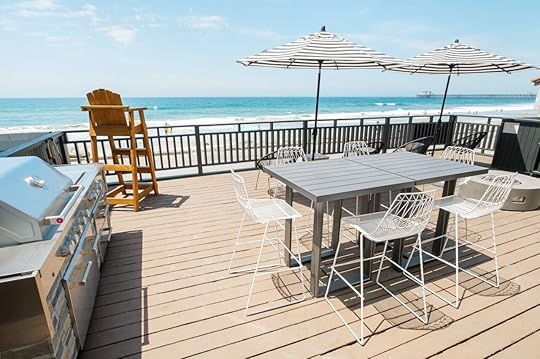 Photo: AirbnbSee more photos
Photo: AirbnbSee more photosEnjoy this cozy beachfront boutique property for your next San Diego vacation. This quaint condo is ideal for solo travelers or couples and is within walking distance of the beach, the pier, and many restaurants and other entertainment. Guest will get front row seats to beach views and wake up to the sound of the waves right outside the window. The newly renovated home features a full bathroom, living room, bedroom, and kitchen.
Four guests, one bedroom
Price: $285 per night
Airbnbs in downtown San DiegoDesigner art-filled luxury townhouse in Little Italy
 Photo: Airbnb
Photo: Airbnb Photo: Airbnb
Photo: Airbnb Photo: AirbnbSee more photos
Photo: AirbnbSee more photosDespite its urban setting, the waterfront neighborhood of Downtown offers plenty of opportunities for outdoor activities. The Waterfront Park, a beautiful green space along the bay, features walking trails, gardens, and a children’s play area. It’s also home to The San Diego Museum of Art, which houses an impressive collection of art from around the globe, including works by renowned artists such as Rembrandt, Monet, and Picasso. And if you’re a fan of art, you might want to check out this art-filled three-story townhouse in the heart of Little Italy. It was designed and built by renowned architect Jonathan Segal and features 20-foot floor-to-ceiling windows, a chic kitchen, dual master suites, and a modern wood-lined backyard patio with seating and a gas fire pit.
Six guests, three bedrooms
Price: $458 per night
 Photo: Airbnb
Photo: Airbnb Photo: Airbnb
Photo: Airbnb Photo: AirbnbSee more photos
Photo: AirbnbSee more photosThis is one for those who are not afraid of heights. The three-bedroom apartment has panoramic views of San Diego’s skyline, the stadium, and the bay. Perfect for digital nomads, the smart home also has an ergonomic workstation (again with a view) and resort-like amenities (a pool, sundeck, gym, grilling area, and theater) for after-work relaxation. It has a mix of boho vibes and sleek modern decor (thanks partly to the floor-to-ceiling windows throughout).
Seven guests, three bedrooms
Price: $400 per night
 Photo: Airbnb
Photo: Airbnb Photo: Airbnb
Photo: Airbnb Photo: AirbnbSee more photos
Photo: AirbnbSee more photosLocated in Little Italy (a vibrant neighborhood full of restaurants and boutique shopping and not far from Balboa Park and the San Diego Zoo), this upscale loft is the ideal location base for exploring Downtown San Diego. The one-bedroom loft features high ceilings and tall windows that drench the rental in light.
Five guests, one bedroom
Price: $275 per night
San Diego Airbnbs with a poolCharming suite for two in Mission Hills
 Photo: Airbnb
Photo: Airbnb Photo: Airbnb
Photo: Airbnb Photo: AirbnbSee more photos
Photo: AirbnbSee more photosSituated in Mission Hills, a neighborhood not surprisingly located in the hills above the city, this is a great Airbnb for a solo traveler or couple looking for a more local stay. Known for its tree-lined streets, historic homes, and stunning views, Mission Hills has some beautiful Spanish Colonial Revival-style properties, and this Airbnb is one of them. The suite accommodates up to two guests and is perched above the pool area. It has a private entrance but no full kitchen facilities (other than a refrigerator and microwave.) The hosts also welcome small dogs, but you’ll need to message for approval before arrival.
Two guests, one bedrooms
Price: $80 per night
 Photo: Airbnb
Photo: Airbnb Photo: Airbnb
Photo: Airbnb Photo: AirbnbSee more photos
Photo: AirbnbSee more photosLocated in the picturesque neighborhood of Point Loma, this coastal retreat is for those who want a luxurious and modern space for a group vacation. It sleeps up to 14 guests with five bedrooms, has epic city and ocean views, a saltwater pool (which can be heated on request), a fire pit, BBQ grills, an outdoor dining area, landscaped grounds, and two driveway parking spaces.
14 guests, five bedrooms
Price: $442 per night
 Photo: Airbnb
Photo: Airbnb Photo: Airbnb
Photo: Airbnb Photo: Airbnb
Photo: Airbnb Photo: AirbnbSee more photos
Photo: AirbnbSee more photosAre you looking for a beautiful villa to have a family reunion or friends gateway? Well, this architectural villa is the perfect place to host it. Indulge in all the luxury amenities this Airbnb San Diego rental offers with its beamed ceilings, spacious open plan layout, oversized patio with a gazebo, a hot tub, and a massive pool with a waterfall rock feature. This home is a luxury paradise with all the resort-like amenities that you need.
Ten guests, three bedrooms
Price: $1,350 per night
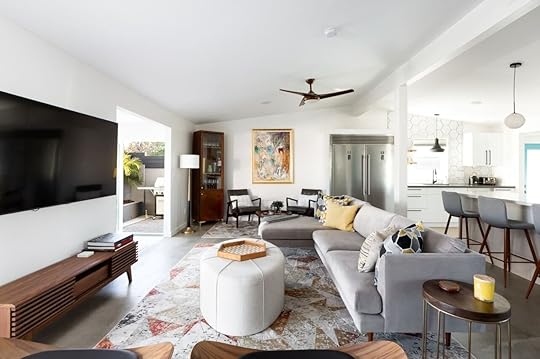 Photo: Airbnb
Photo: Airbnb Photo: Airbnb
Photo: Airbnb Photo: Airbnb
Photo: Airbnb Photo: AirbnbSee more photos
Photo: AirbnbSee more photosThis fully renovated mid-century home is brand new from top to bottom. The home features a fully stocked kitchen with a massive island perfect for dinners with huge gatherings, along with a dining room table for ten. The spacious living room is great for entertaining and features a large smart TV and board games and the backyard has heated pool, a BBQ grill, an outdoor shower, outdoor seating areas, and games like corn hole and shuffleboard.
Ten guests, four bedrooms
Price: $890 per night
Cabin rentals in San DiegoCabin cottage steps from the sand in central Mission Beach
 Photo: Airbnb
Photo: Airbnb Photo: Airbnb
Photo: Airbnb Photo: AirbnbSee more photos
Photo: AirbnbSee more photosThis south-facing three-bedroom cottage in central Mission Beach, just a stone’s throw from the coolest cafes, coffee shops, breakfast spots, and restaurants. It’s also just half a block away from the bay and just a block further to the beach. The host provides a handy booklet with local recommendations, from favorite hikes to the best places to eat. The bright and breezy cabin has three bedrooms and a fully stocked kitchen. Outside, there’s a lovely porch for morning coffee or afternoon cocktails.
Six guests, three bedroom
Price: $288 per night
 Photo: Airbnb
Photo: Airbnb Photo: Airbnb
Photo: Airbnb Photo: Airbnb
Photo: Airbnb Photo: Airbnb
Photo: AirbnbThis little cabin is inspired by lodges built in East Africa. It’s set to be an oasis and a place of peace and romance, yet not far from the city. The cabin features a gourmet kitchen with an island and a connected bedroom and living area. Vegetable gardens surround the home with all types of organic produce that guests can pick themselves. The serene cabin is five minutes from Stone Brewery, Felicita Park, Lake Hodges, and a scenic hour drive to local wineries. 
Two guests, one bedroom
Price: $317 per night
Matador Network's Blog
- Matador Network's profile
- 6 followers



